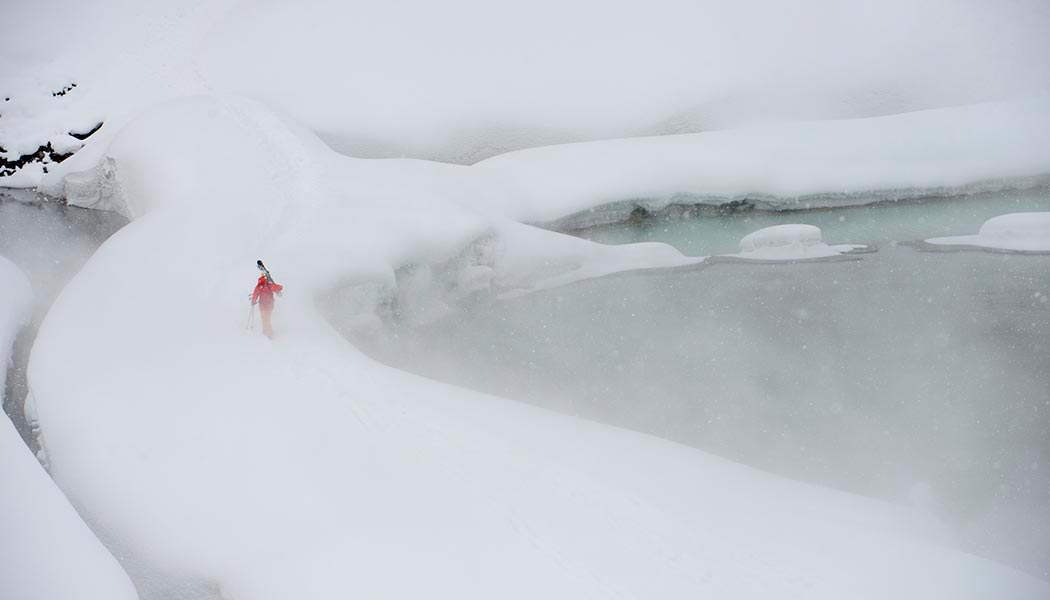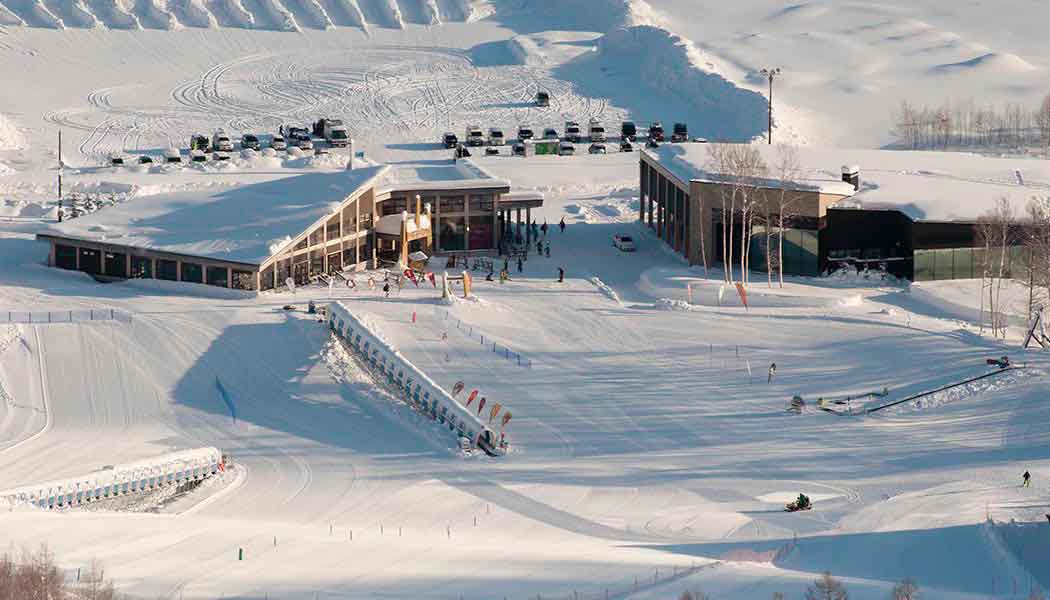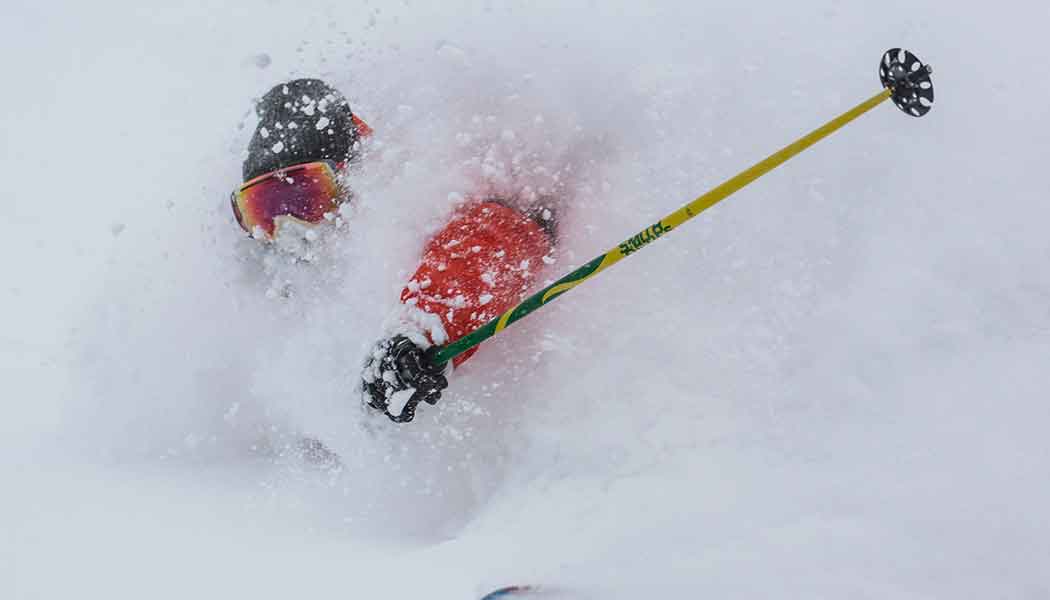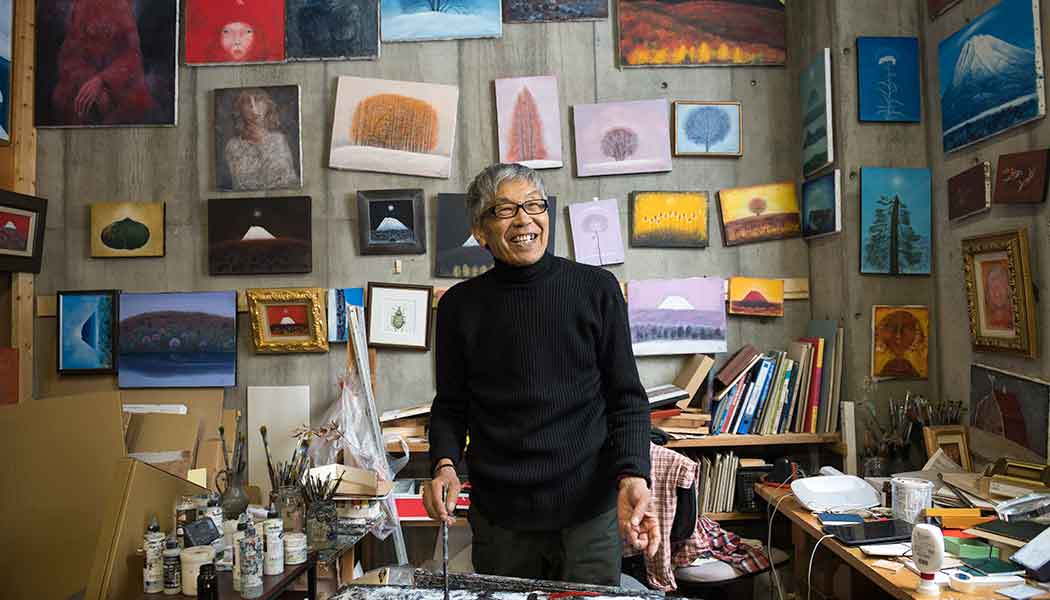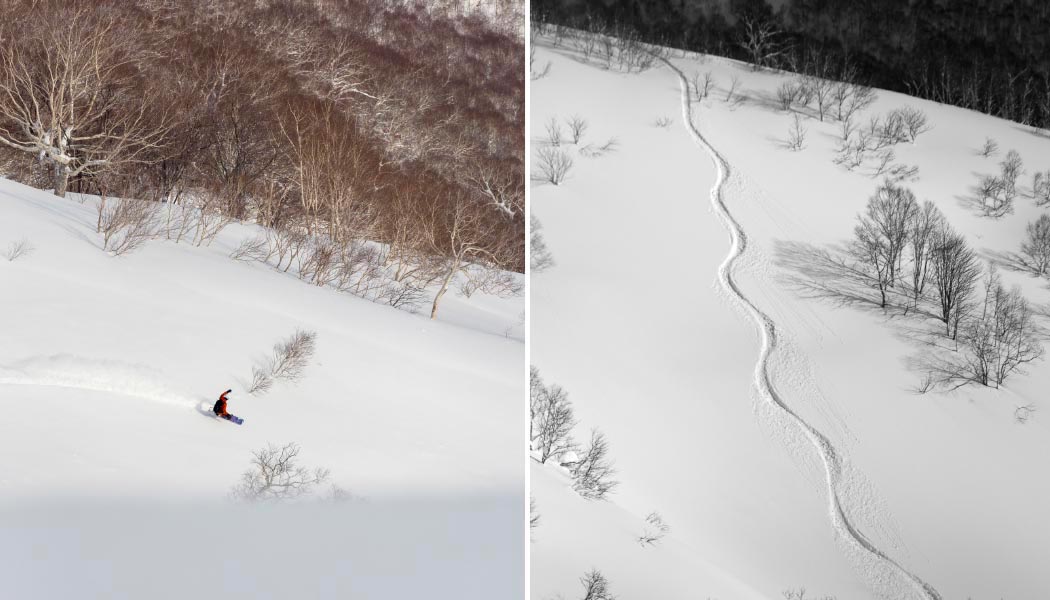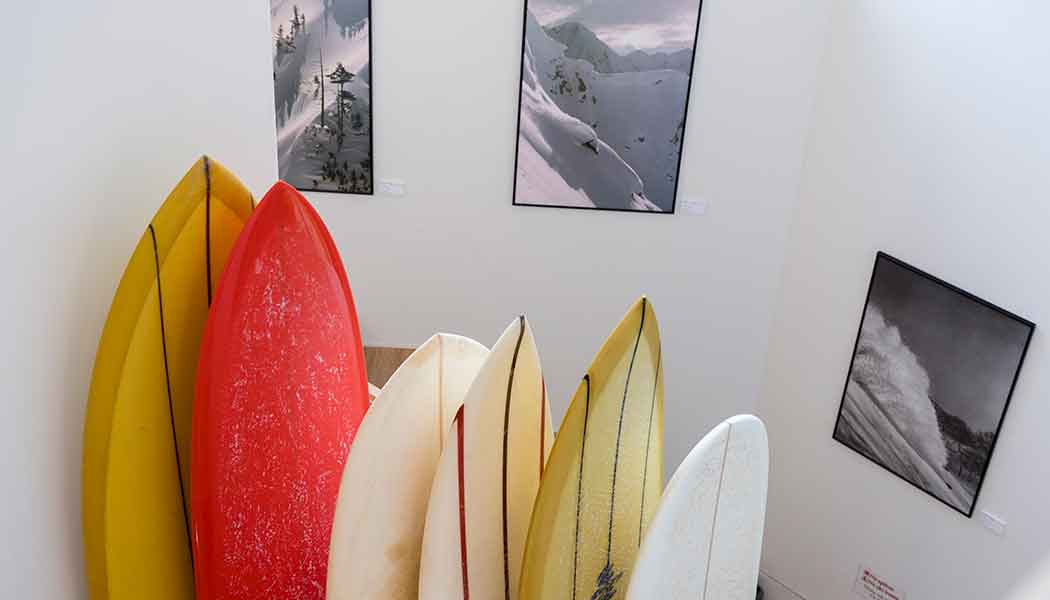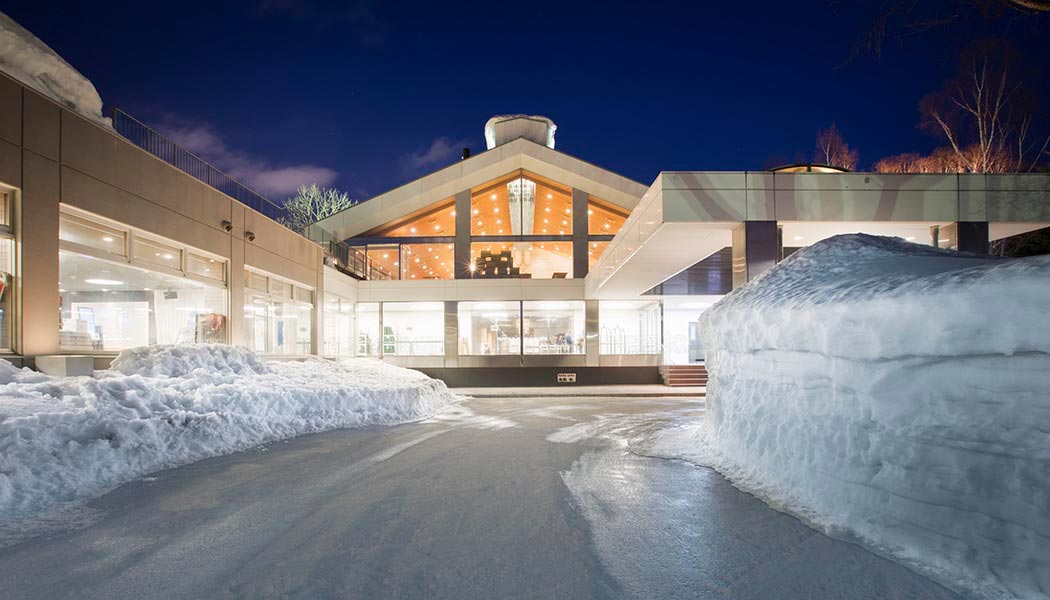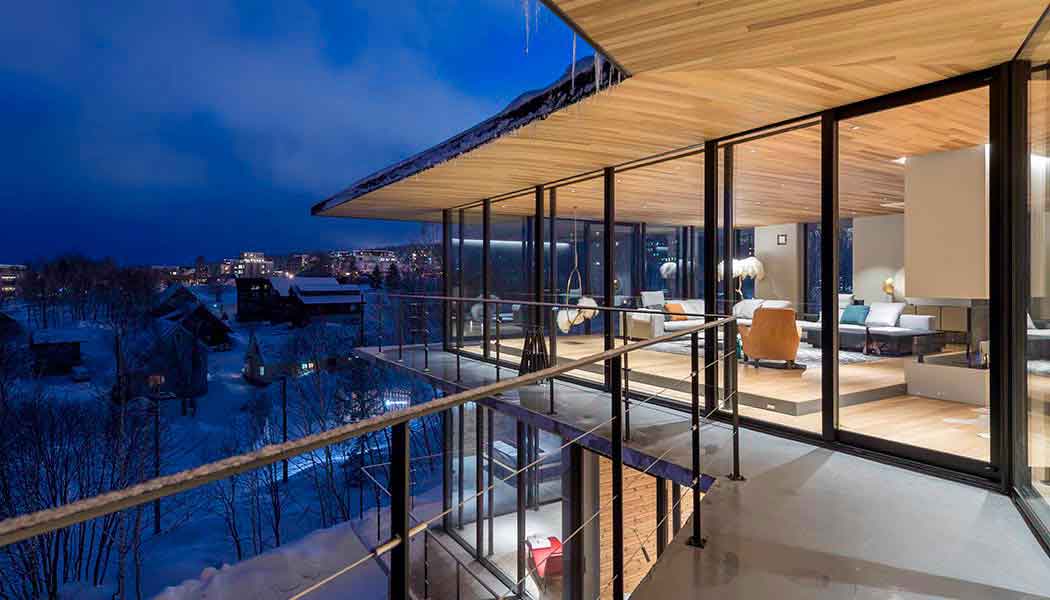Just a hop, skip and a jump up the Pacific Ring of Fire, another volcanic archipelago is attracting board sports lovers and luxury travellers from across Asia for a very different resort experience, writes Powderlife magazine editor Kristian Lund.
Had social media been around in the 1970s a hashtag like #indosurf would have been to the discovery of Indonesia’s waves as #japow has been to the revelation of Japan’s now-legendary powder snow over the past decade.
These days anyone with an interest in snow sports would find it hard to spend a few minutes scrolling through their feeds between November and April without being bombarded by other-worldly footage of skiers and snowboarders floating, bouncing and ploughing through endless fields of waist to head-deep #japow – with smiles frozen onto their faces illustrating sheer joy as much as disbelief that it’s real.
Such is the nature of skiing in Japan. Thanks to a unique geographical and meteorological setup, the west coast of the country is the beneficiary of more snowfall than almost anywhere in the civilised world. “Ocean-effect snow” is the technical term, whereby snowfall is generated by cold air blowing across a warmer body of water, resulting in clouds bulging with moisture that release as snow when they cool.
In Japan’s case it’s a prevailing north-westerly airstream blowing off Siberia and over the Sea of Japan before hitting the cold north-west coastline and unloading metres upon metres of fluffy white stuff. This can happen day after day for weeks at a time. Just this past winter it snowed on about 80 of 100 days during the peak season in the resort of Niseko, Japan’s premier resort. On most of those days 10-30cm accumulated at village level at the foot of the mountain. Don’t believe it? Check out the daily snow report archive at Powderlife.com for photographic evidence.
This process is nothing new. Japan has always had lots of snow, but somehow it largely escaped mainstream consciousness. This seems to have been due to a range of factors: firstly, ski equipment wasn’t designed for deep powder; second, the rest of the world had plenty of snow; and third, Japan was perceived to be an expensive and difficult place to travel to.
As winters became increasingly dry in Europe and the US through the’90s and into the 2000s, and powder-specific skis and snowboards evolved, Japan’s time had come. Much like Bali, it was largely Australian snowboarders (who were often surfers as well) who first started traveling to Japan en masse between 2000 and 2005, returning with tales of a land where you could get fresh tracks in waist-deep powder until nightfall, and wake up to a fresh 30cm and a complete reset the next day. Essentially its Japan’s version of offshore and barrelling all day, every day during peak season – albeit washed down with sake and sushi rather than Bintang and nasi goreng.
In a turn of fate that’s almost too good to be true for Bali residents and particularly surfers, Niseko’s peak season between December and March is the exact opposite side of the year to Indonesia’s peak surfing season, meaning Bali residents never need to miss an epic swell or a big snowfall.
One long-time Bali resident who now takes advantage of this is Drifter Surf Shop co-founder and entrepreneur, Jake MacKenzie. He spent most of last winter in Niseko “snow surfing” with the founder and team riders for Gentemstick – Japow’s answer to Burton. So recognised as an icon of powder snowboarding is Gentem that Jake now sells the beautiful handcrafted snowboards from his stores in Seminyak and Uluwatu.
“I’ve skied and snowboarded in Europe since I was a kid and spent a few years living in Nevada,” says Jake. “I’ve snowboarded in Utah too, which is said to be the powder capital of the world, but Japan beats all of them hands down. In terms of a whole cultural experience, Japan is a great place for a ski holiday. The people are so hospitable and the food is also incredible. It just happens to be the closest world-class skiing for us too.”
Tales tall and true of Japan’s snow have now been turbo-charged by social media and these days it’s not just hardcore skiers and snowboarders that want to experience this real-life winter wonderland. Travellers from across Asia are learning to ski for the first time on the soft, forgiving slopes. Others don’t even clip or strap into any ski equipment – they just ride the gondolas to the top, take a few snaps for their Instagram accounts, and head back down to the bottom to build snowmen and partake in that other wonderful Japanese tradition – eating delectable Japanese food.
Niseko is to Japan what Bali is to Indonesia – the gateway to the mountains for the outside world and starting point for those wanting to find their own powder paradise.
There are more than 500 ski resorts in Japan, however few of them have much to offer international tourists – other than mountains of snow. There is generally no après or nightlife to speak of and limited options for dining and play.
Niseko however, on the wild northern island of Hokkaido at the foot of a miniature version of Mt Fuji, has over the past 50 years attracted an interesting collection of ski bums, nature lovers, artisans and aspiring chefs from across Japan who unwittingly laid the foundations of a uniquely organic ski resort village growing out from a single lift built in 1961.
The core of that original village survives today in the form of Hirafu – Niseko’s version of Seminyak. While it has evolved into a glitzy and glamorous international ski resort, still today outdoor “onsen” hot spring baths and tiny hole-in-the-wall “izakaya” restaurants can be found in the network of village streets buried amongst mountains of snow. Meanwhile multi-million-dollar chalets and uber-luxury condominiums are replacing any ungracefully ageing cottages and pensions and filling in vacant land.
Small-time entrepreneurs and developers out of Australia got the ball rolling in the mid-2000s before global players increasingly got in on the game – first Hilton followed by Park Hyatt, Ritz-Carlton and Marriott, and now signs Aman is also set to announce their entry soon. Rumours are swirling at the moment that US ski resort giant Vail Resorts has acquired a resort called Kiroro, alongside Niseko. That would put it in the same stable as Vail, Beaver Creek and Whistler Blackcomb and take the region’s acclaim another giant leap forward.
With literally billions of dollars being pumped into Niseko, those who enjoy luxury accommodation are spoilt for choice. Developers are in fierce competition with each other to recruit famous architects and build the latest and greatest places to stay, and many condos now come with private onsen baths inside or on the balconies. Now there are hundreds of chalets and apartments you can book online at Powderlife.com
Chalets and condos with levels of service akin to the finest luxury ski accommodation in Europe and North America have also arrived. One such private chalet, Hakuch?zan, comes with a team of six staff onsite including a chalet manager, chef, butler and chauffeur and rents for US $14,500 per night. For those without that sort of budget there are also plenty of older lodges and budget accommodation to choose from, starting at about $50 a night.
Like the accommodation, the dining scene in Niseko is second to none of any Japanese ski resort, and in itself is becoming one of the country’s culinary hotspots. It helps that Hokkaido is known as the “food bowl of Japan” for its vast agricultural industry and ready access to seafood from two adjacent oceans. The produce grown out of the fertile volcanic soil tastes as fresh as the water that flows from snow-fed springs all across the country side.
Many of the original old chefs who moved here as young men and women are now looking to hand over to aspiring protégés. Niseko is now frequented by Michelin Guide inspectors looking for the next hit, and in turn more and more Michelin-recognised chefs are being drawn to Niseko to open new restaurants. There are now 15 restaurants in the area that have had stars or recommendations bestowed on them, or are headed by chefs who have Michelin-starred restaurants elsewhere.
Niseko is also home to 25 onsen baths and you will be within walking distance from one or more anywhere you stay in the resort areas. Coming from deep underground, onsen water contains various minerals that are said to have therapeutic benefits. There’s no better way to cap off a day in the powder than thawing out and soothing your tired muscles in a steaming outdoor onsen with snow falling silently all around.
While Hirafu is the buzzing heart of Niseko and home to the widest variety of restaurants and nightlife, there are actually four resorts on the one mountain, each with its own village at the base. All offer their own unique ski holiday experience, allowing visitors to choose the resort that suits their purposes – be that an action-packed week of skiing and sake, or a peaceful retreat in a snowbound forest for the ultimate #japow ski holiday experience.
If Niseko sounds like the type of place you’d like to escape to this wet season, you can find out all this and more at Powderlife.com – Niseko’s premier news, information and accommodation booking portal. Our resort specialists can recommend the right resort for your travel party and the ideal chalet or apartment to make best use of your budget.

































